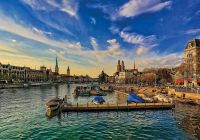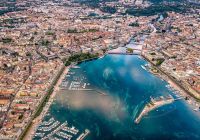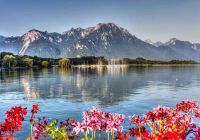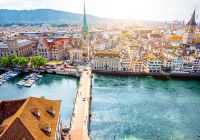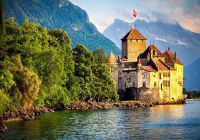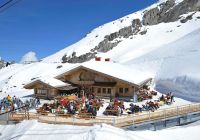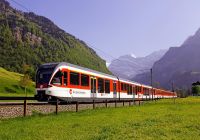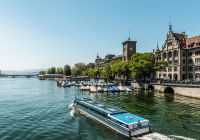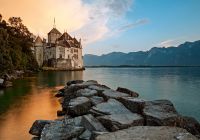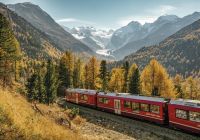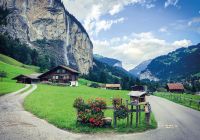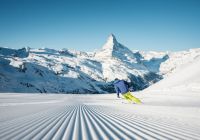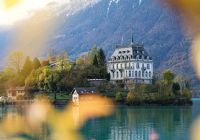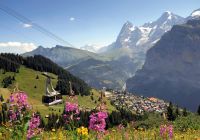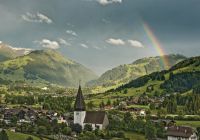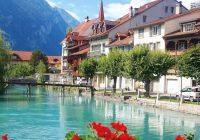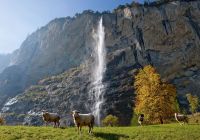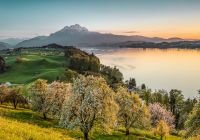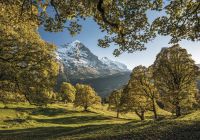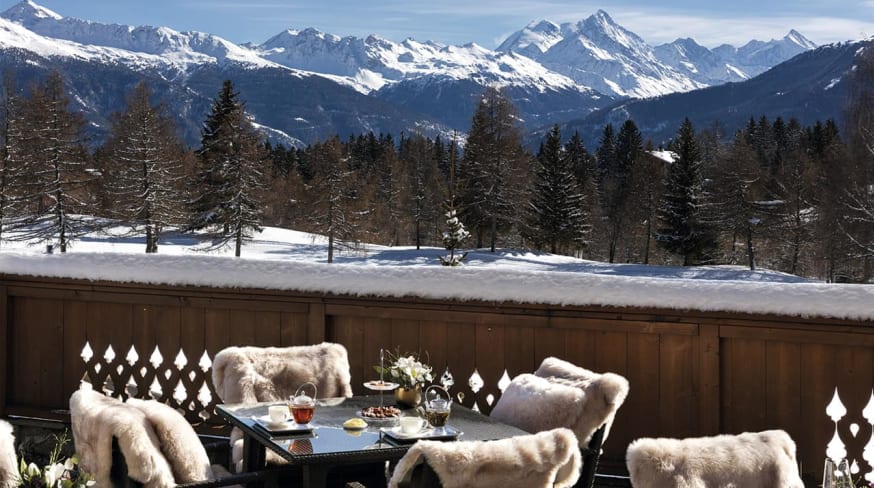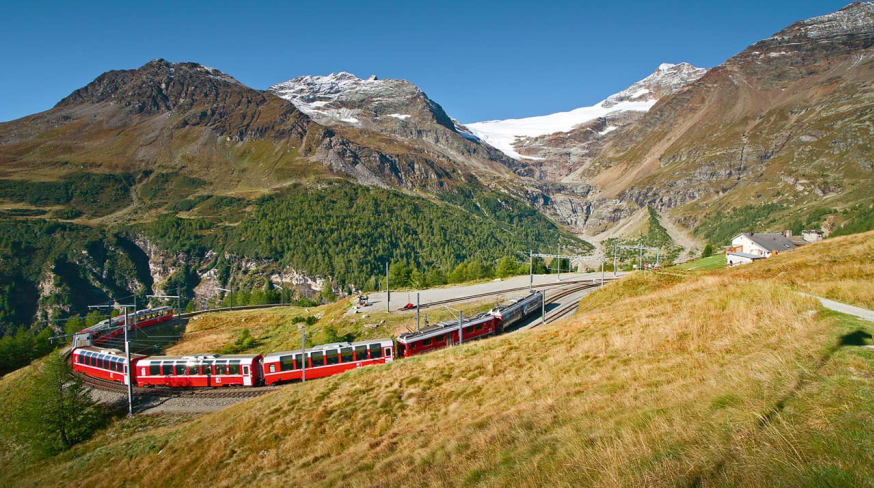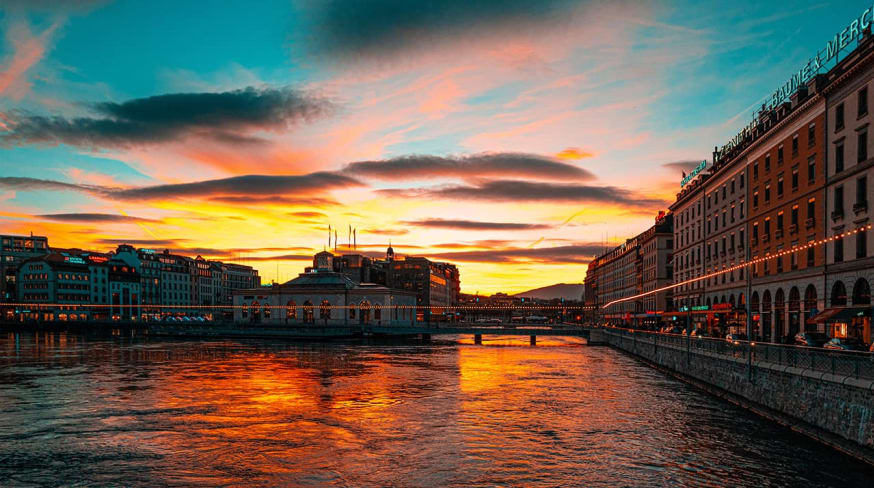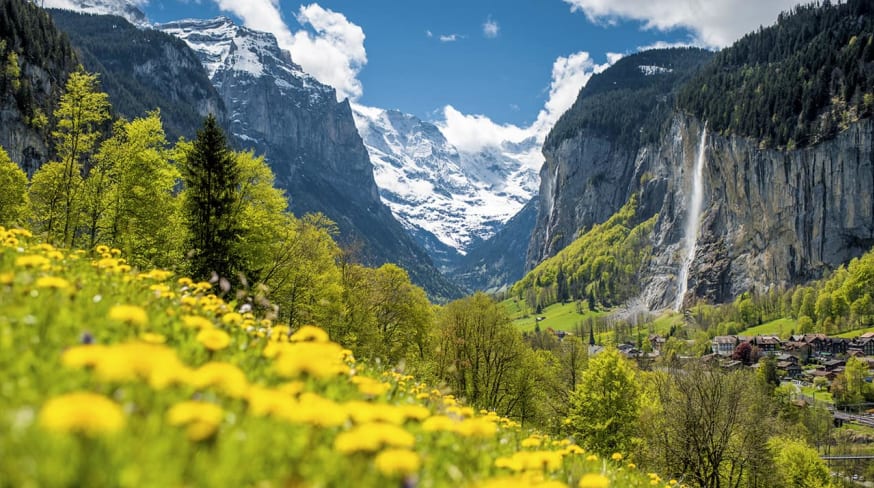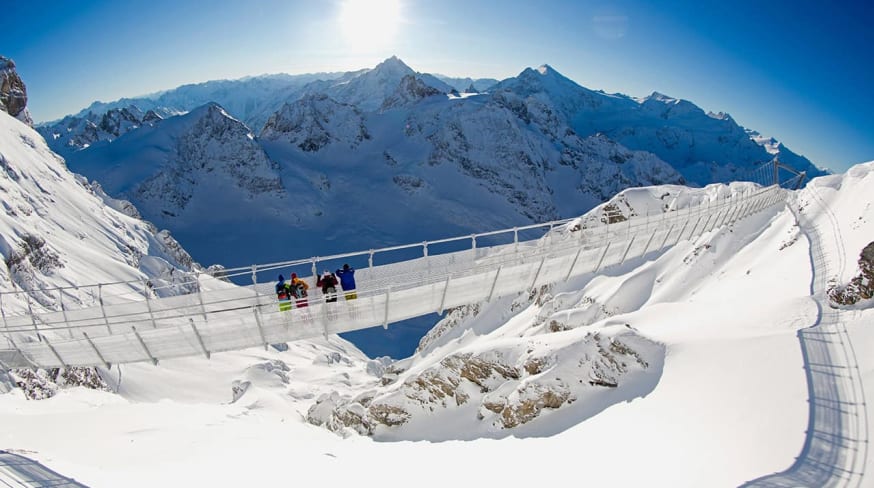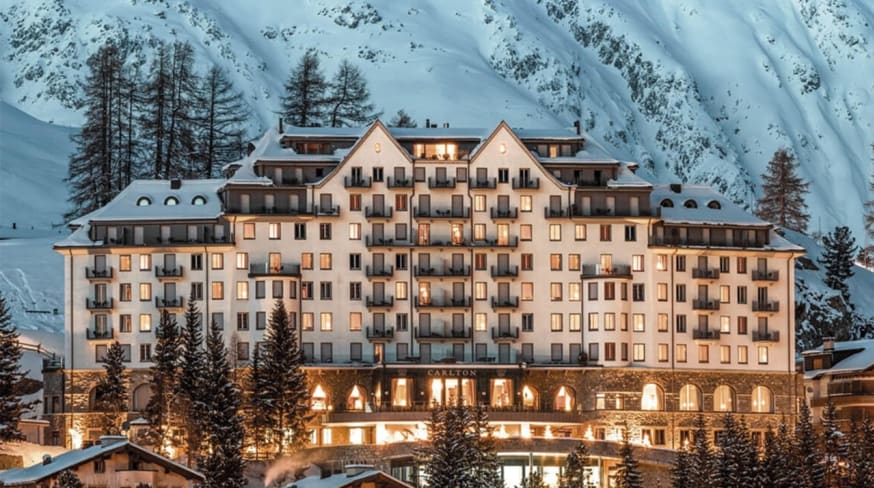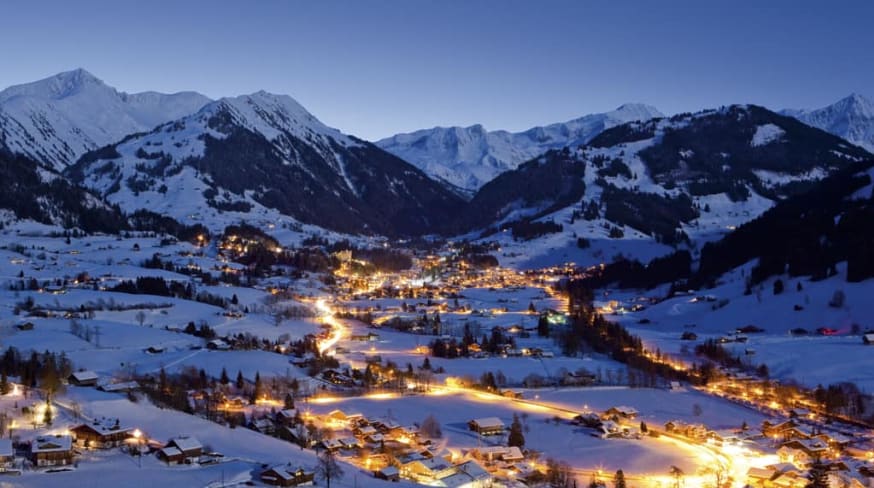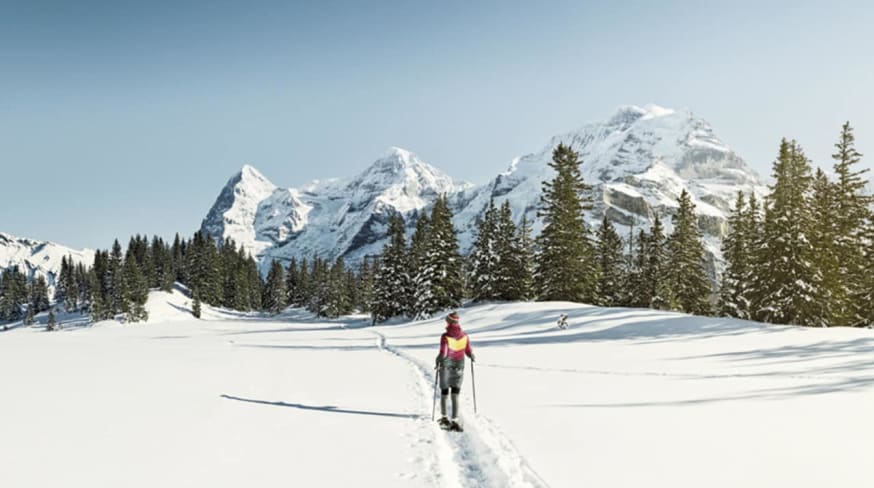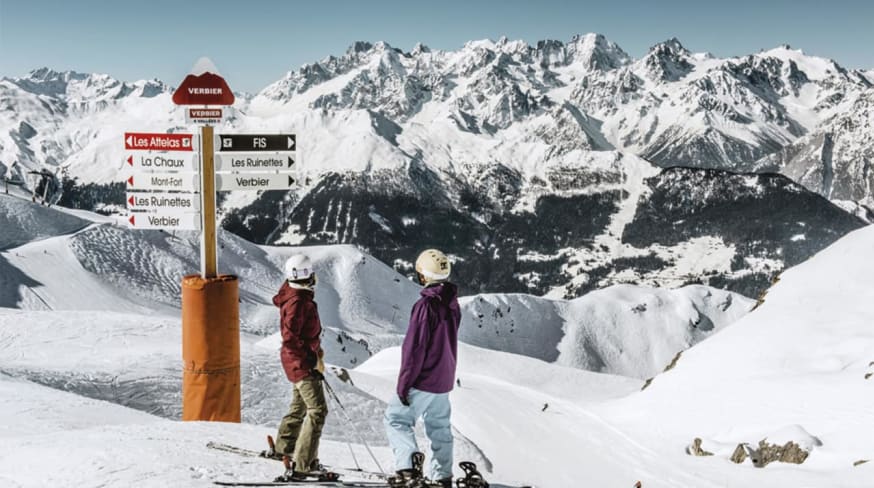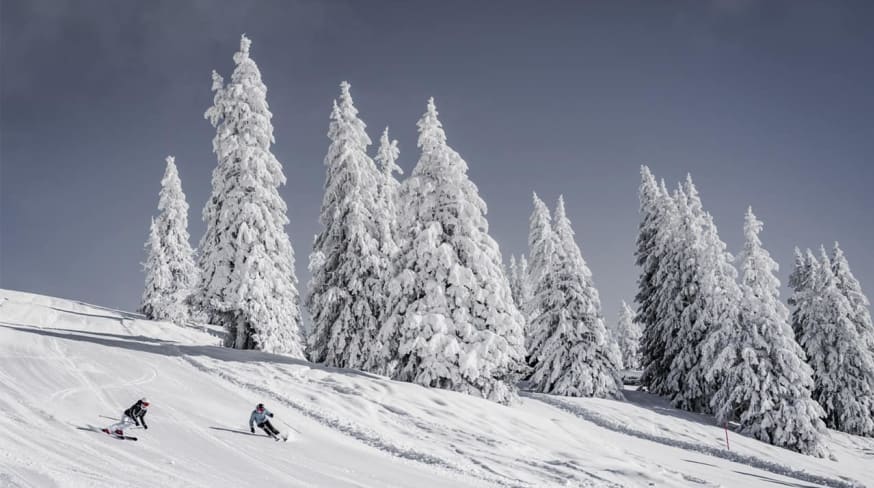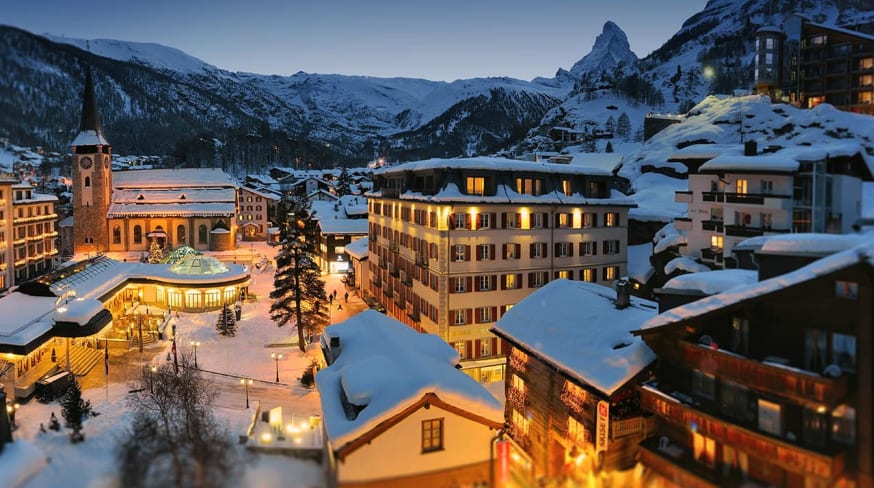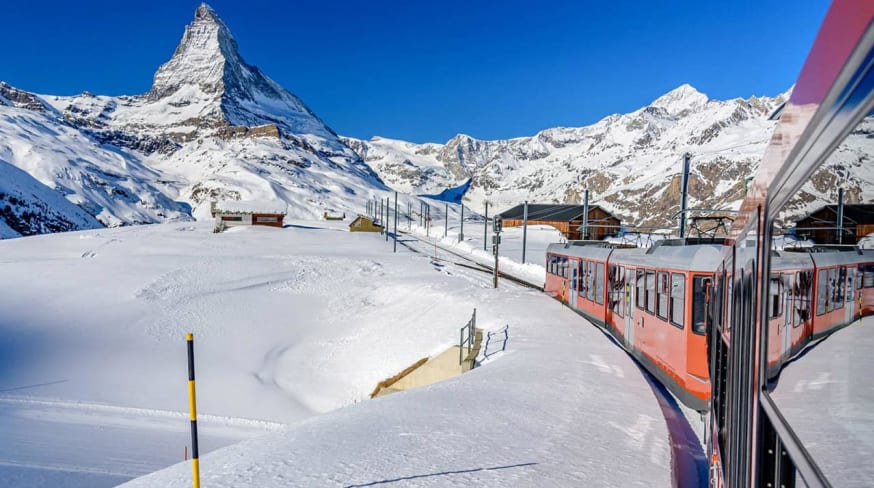Destination Switzerland
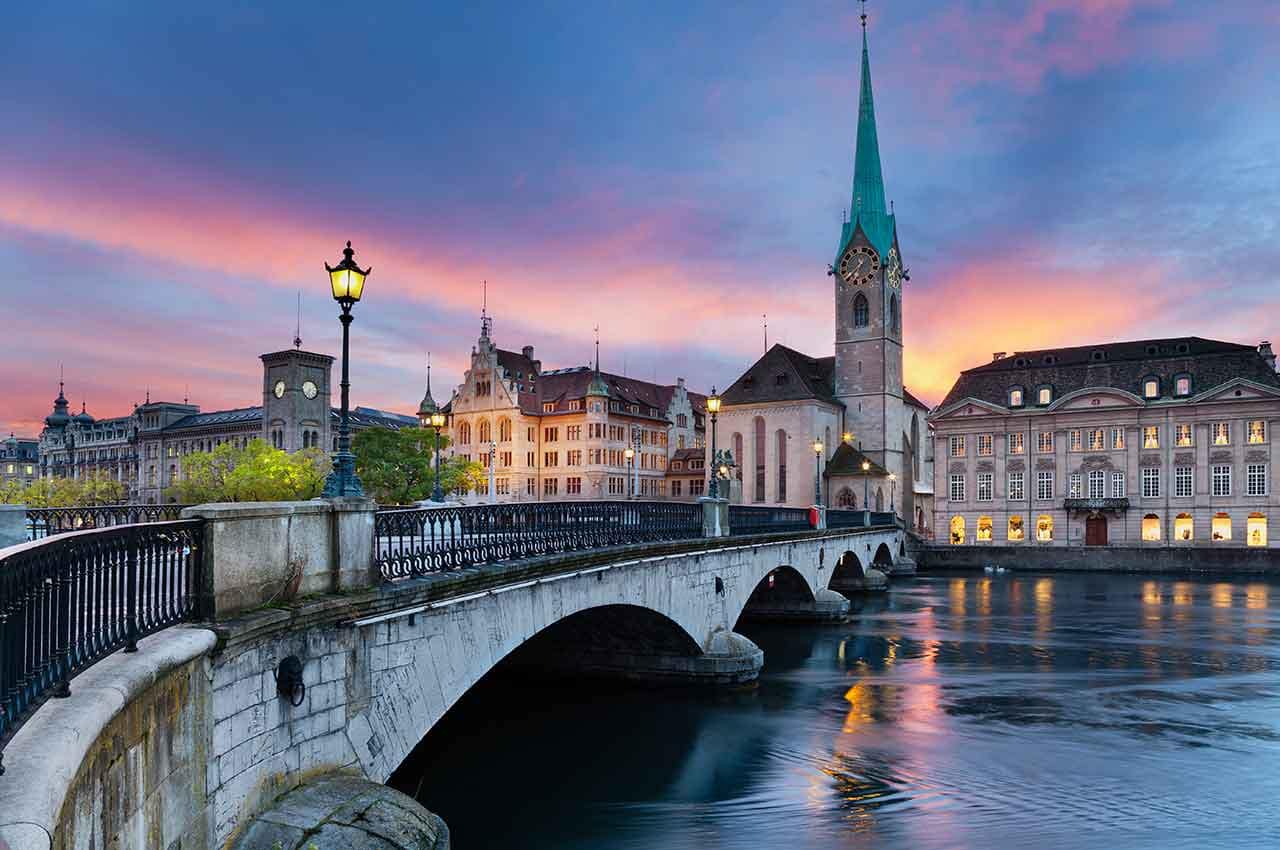
An eclectic destination, which enchants with its organization, natural beauty and its cities, and international cuisine.
All stereotypes are true - cheese, chocolate, watches, punctuality - but Switzerland is much more than that. The main cities are cosmopolitan and vibrant, the transport network is excellent and the landscapes are breathtaking. Switzerland is diverse and multilingual — nearly its entire population of 7.9 million people speaks some English along with at least one of the four official languages — German, French, Italian, and Rto-Roman.
Switzerland's stunning landscapes invite action. In winter, ski and snowboard in Graubünden, Bernese Oberland and Central Switzerland. When the pastures turn green, hiking and biking trails dominate the mountainous areas. For another point of view of Swiss beauty, a balloon flight or a parachute jump is a good choice. On the wish list of many travelers, Eiger Mountain and the Jungfraujoch Pass, also known as the top of Europe.
The basis of the Swiss economy is highly labor. Microtechnology, high technology, biotechnology, the pharmaceutical industry, and know-how in the banking and insurance sector are important branches of the economy.
The Swiss love hiking, and with more than 65,000 km of marked trails, most of them with impressive views, it's not hard to see why. The regions of Jungfrau and Zermatt are quite popular with locals. It is also possible to take bike trails, all very well marked.
In winter, spectacular scenery and excellent transport infrastructure make Switzerland one of Europe's top destinations for skiing, hiking, and climbing. The resorts in the Jungfrau region - Grindelwald, Murren and Wengen cater well to intermediate skiers. For those who visit Switzerland in summer and still want to ski, there is the option of the Saas Fee and Zermatt glaciers.
Touristic spots
Matterhorn
The mountain symbol of Switzerland is considered one of the most photographed in the world. From the Klein-Matterhorn station (Matterhorn Paradise), separated from the Matterhorn by the Theodul pass and the glacier, there is a fantastic view of this pyramidal-shaped mountain, which is very difficult to climb. Visitors can board the aerial cable car in Zermatt leading to the highest observatory in the Alps, 3820 meters above sea level.
Aletsch
The Aletsch region is part of a UNESCO World Heritage Site, surrounding the largest glacier in the Alps: the immense and beautiful Great Aletsch Glacier, which represents the most powerful ice flow in the Alps (an incredible 11 billion tons of ice). In addition, the entire region is a habitat for many rare animal and plant species, such as the Aletsch Forest.
Numerous observation points offer a good view of the glacier, including cable car access for a magnificent view from the top of the large glacier. The ease of access makes it a very popular attraction, with the ideal location for hiking, winter sports and nature walks.
Jungfraujoch
Known as the top of Europe, the Jungfrau railway journey reaches the highest station in Europe, at 3,454 meters above sea level — directly in the heart of the Jungfrau-Aletsch Swiss Alps, a UNESCO World Heritage Site. All year round, leaving Kleine Scheidegg, the rack train goes up to Jungfraujoch through a seven-kilometer-long tunnel, built between 1896 and 1912. Two stops inside the tunnel offer spectacular views of the glacier. High up the mountain, visitors can admire the scenic beauty at the Sphinx observatory, play in the snow at the Snow Fun Park, venture to the Aletsch Glacier, or explore the Ice Palace.
Bernina Express
The Bernina is a panoramic train that connects Northern and Southern Europe on the Rhaetian Railway, a UNESCO World Heritage Site. Crossing the Alps aboard the Bernina Express is one of the most spectacular ways to discover the region. The train passes through 55 tunnels and over 195 bridges on the route from Chur to Tirano. Among the scenarios presented to travelers are: the Montebello curve, overlooking the Bernina Massif; the Morteratsch glacier; the Lej Pitschen, Lej Nair and Bianco lakes; the Alp Grüm; and the Brusio circular viaduct.
Main cities
Zurich
Culturally vibrant, located at the meeting of rivers and lakes, Zurich is often recognized as one of the best cities in the world to live in. Recognized as an experienced and dedicated financial center, the largest and richest metropolis in Switzerland consolidates itself in the 21st century as one of the most fashionable destinations in Central Europe
What to do in Zurich
- The Grossmünster church is a Zurich landmark and its twin towers aren't just a highlight of the city's scenery; you can climb them up for a beautiful view of the city.
- On boulevard Bahnhofstrasse you can find everything: fashion, art and Zurich specialties, which attract both locals and visitors.
- Lake Zurich, once a transportation route, is now popular for swimming, boating, or picnicking on the banks.
- Surrounded by the Opera House, Kronenhalle, Café Odeon and Lake Zurich, the Sechseläutenplatz square is the ideal starting point for a city tour.
Lucerne
This small city, next to Lake Lucerne, is the gateway to central Switzerland and is well known for its contrasts of picturesque, well-preserved houses with buildings with innovative designs. In addition, the city also stands out economically for its industrial activity, be it textile, metallurgical or wood, for example.
What to do in Lucerne:
- Museggmauer: This is a very well preserved wall that protected the city in the Middle Ages. From the top of the towers it is possible to have an incredible view of the city and the mountains that surround it. When it was being built in the 14th century, each tower was designed with a different aesthetic because the purpose was not only to protect the city, but also to act as a business card and convey the idea of being a city on the rise.
- Kapellbrücke: This is the oldest covered bridge in Europe, dating from the 14th century and containing approximately 240 meters in length. This bridge is located at the mouth of the Reuss River and connects the new part of the city with the historic center, allowing only the passage of pedestrians.
- Hofkirche: The city has numerous churches, however, the one that stands out the most is the Hofkirche Church, with its Roman origins.
- The Lion of Lucerne: One of the city's main attractions is a stone sculpture of a lion, impressively cut into a mountain. This lion represents the Swiss army that was massacred during the French Revolution and dates back to 1820.
Montreux
Located on the banks of the Geneva River, this city is world famous for the Jazz festival that it usually hosts during the month of July. In addition, it stands out for its surrounding vineyards.
What to do in Montreux:
- Chatêau de Chillon: This is the most famous castle in Switzerland, dating back to (approximately) 1150. It was the scene of inspiration for big names such as Jean-Jacques Rousseau and Victor Hugo. Today, the castle is open to visitors.
- Lavaux: This is the wine region that produces the most in Switzerland and has been considered a UNESCO Cultural Heritage Site since 2007. The best time to visit this attraction is from May to August (due to spring and summer), however, it is also interesting during autumn because of the orange colors of the leaves.
- Lake Geneva: The largest lake in Switzerland, which is shared with France, has a beautiful view of the Alps. At this attraction, it is possible to take a boat trip across the lake or take a walk along the lake shore.
- Montreux Cassino: The city's casino, in addition to having a beautiful view of the lake, was the inspiration for the song “Smoke on the Water” by the group Deep Purple. The casino was visited by famous bands such as Led Zeppelin, Queen, and Pink Floyd.
Basel
Located on the banks of the Rhine River, Basel is well known for its medieval historic center and is considered the cultural capital of Switzerland.
Things to do in Basel
- Marktplatz and Rathaus: The Marktplatz square has an open market where local flowers, vegetables, and fruits are sold. In this square is located the Rathaus, with its impressive medieval architecture, and today it is the seat of the city's government.
- Basel Cathedral: Completed in 1500, the Cathedral is one of the city's main symbols. It is recommended to visit not only its interior, but also to visit its terrace that offers a unique view of the city and the river.
- Freie Strasse: It is the city's main shopping street that also has many coffee options offering local delicacies.
Climate of Switzerland
The climate is moderate and the seasons are well defined and differentiated. Autumn (from September to November) presents a beautiful spectacle with the changing colors of the leaves of the trees. Harsh winters, with lots of snow, are no longer the rule, especially on the plains. In spring (from March to May), the trees bloom and the meadows turn green. In summer, the temperature rises to 25 to 30 °C.
Best time to visit Switzerland
The best time to visit Switzerland depends on the type of itinerary you want to take: whether focusing on visiting cities or exploring the mountains.
The cities are most visited in the summer months (June to September). During winter, most cities receive large amounts of snow, although this rarely causes life to stop.
In the mountains, the two main seasons occur from June to October and from mid-December to mid-April; in between these times, most mountain resorts close.
How to get around Switzerland
Public transportation is comprehensive. The train ride is comfortable, hassle-free, and extremely scenic, with mountain routes that are a separate attraction. The national network is perfectly integrated with the many routes, especially the Alpine lines, operated by local companies.
Another form of transportation worth exploring are lake ferries, which operate from April to October.


